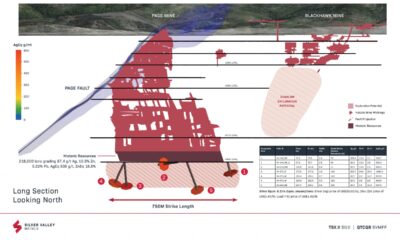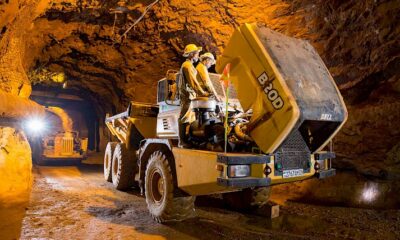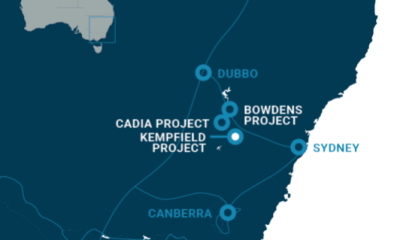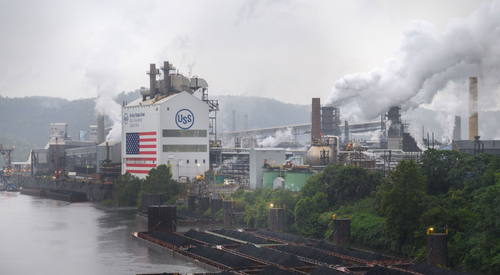Base Metals
Study estimates 23M people may be affected by potentially dangerous concentrations of toxic waste from metal mining
A new study by an international team of researchers estimates that 23 million people may be affected by potentially dangerous concentrations of toxic waste…

A new study by an international team of researchers estimates that 23 million people may be affected by potentially dangerous concentrations of toxic waste from metal mining contamination on rivers and floodplains across the world. A paper on the study is published in the journal Science.
Firefighters from Minas Gerais conduct searches following the Vale tailings dam rupture in Brumadinho, Minas Gerais, Brazil. The collapse of the dam released a mudflow that engulfed the mine’s headquarters, including a cafeteria during lunchtime, along with houses, farms, inns, and roads downstream. 270 people died as a result of the collapse, of whom 259 were officially confirmed dead in January 2019 and 11 others reported as missing, whose bodies had not been found.
On 26 January 2019, Vale president Fabio Schvartsman stated that most of the victims were Vale employees. Three locomotives and 132 wagons were buried and four railway workers were missing. The mud destroyed two sections of a railway bridge and about 100 meters of railway track.
The dam failure released around 12 million cubic meters of tailings. Metals in the tailings were incorporated into the river sediments, with a higher concentration closer to the site of the spill. Analyses of the river sediment were conducted downstream for 27 elements, showing some minor increases in metal concentrations. Severe concentrations of cadmium were found at Retiro Baixo, some 302 km (188 mi) downstream from the mine site. Photo reproduced with permission from the Fire Department of Minas Gerais
Led by Professors Mark Macklin and Chris Thomas, Directors of the Lincoln Centre for Water and Planetary Health at the University of Lincoln, UK—working with Dr Amogh Mudbhatkal from the University’s Department of Geography—the study offers a comprehensive understanding of the environmental and health challenges associated with metal mining activities.
Using a new georeferenced global database of 185,000 metal mines compiled by the team and employing a combination of process-based modeling and empirical testing, the research assessed the global scale of metal mining contamination in river systems and its repercussions for human populations and livestock.
The study modeled contamination from all known active and inactive metal mining sites, including tailings storage facilities—used to store mine waste—and looked at potentially harmful contaminants such as lead, zinc, copper, and arsenic, which are transported downstream from mining operations, and often deposited along river channels and floodplains for extended periods.
Our new method for predicting the dispersal of mine waste in river systems worldwide provides governments, environmental regulators, the mining industry and local communities with a tool that, for the first time, will enable them to assess the offsite and downstream impacts of mining on ecosystem and human health.
We expect that this will make it easier to mitigate the environmental effects of historical and present mining and, most importantly, help to minimise the impacts of future mining development on communities, while also protecting food and water security.
—Professor Mark Macklin
Released against the backdrop of growing demand for metals and minerals to feed the demands of the green energy transition, the new results highlight the widespread reach of the contamination, affecting approximately 479,200 kilometers of river channels and encompassing 164,000 square kilometers of floodplains on a global scale.
According to the findings of the study, approximately 23.48 million people reside on these affected floodplains, supporting 5.72 million livestock and encompassing more than 65,000 square kilometers of irrigated land. Due to a lack of available data for several countries, the team behind the study believe these numbers to be a conservative estimate.
Various pathways exist for humans to become exposed to these contaminant metals including from direct exposure through skin contact, accidental ingestion, inhalation of contaminated dust, and through the consumption of contaminated water and food grown on contaminated soils.
This poses an additional hazard to the health of urban and rural communities in low-income countries and communities dependent on these rivers and floodplains, especially in regions already burdened with water-related diseases. In industrialized nations in Western Europe, including the UK, and the United States, this contamination constitutes a major and growing constraint to water and food security, compromises vital ecosystem services, and contributes to antimicrobial resistance in the environment.
Rapid growth in global metal mining is crucial if the world is to make the transition to green energy. Much of the estimated global contamination we have mapped is a legacy from the industrial era—rightly, modern mining is being encouraged to prioritize environmental sustainability. Our methods, which also work at local scales, add an important new approach in this process for which have set up an applied unit of our research center ‘Water and Planetary Health Analytics’ to work with the sector.
—Professor Chris Thomas
Professor Deanna Kemp from the University of Queensland’s Sustainable Minerals Institute, who was part of the team behind the study, called the results sobering.
At a basic level, these findings remind us that mining can cause extensive downstream damage over long periods of time. Many people benefit from mining and metals, but we must do more to understand and prevent the negative effects on people who live and work in affected areas.
—Professor Deanna Kemp
Resources
-
M. G. Macklin et al. (2023) “Impacts of metal mining on river systems: a global assessment.” Science 381, 1345-1350 doi: 10.1126/science.adg6704

White House Prepares For “Serious Scrutiny” Of Nippon-US Steel Deal
White House Prepares For "Serious Scrutiny" Of Nippon-US Steel Deal
National Economic Adviser Lael Brainard published a statement Thursday…
How to Apply for FAFSA
Students and families will see a redesigned FAFSA this year. Here’s how to fill it out.
Dolly Varden consolidates Big Bulk copper-gold porphyry by acquiring southern-portion claims – Richard Mills
2023.12.22
Dolly Varden Silver’s (TSXV:DV, OTCQX:DOLLF) stock price shot up 16 cents for a gain of 20% Thursday, after announcing a consolidation of…











